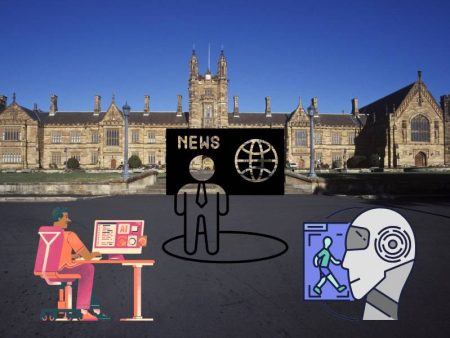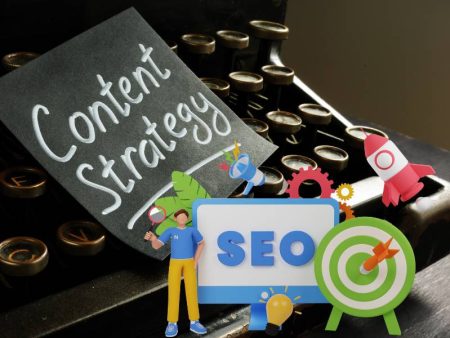Picture this: You’re sipping late night matcha, sketching a landing page wireframe. You wonder, “Is this button placement optimal? Will this hero image land emotionally?” Now, imagine a tool that analyzes your layout in real-time, says: “Move that button 8px right for better thumb reach,” or “Use a warmer image for higher engagement.” Science fiction? Not anymore. AI is creeping into the heart of UX/UI design, claiming it can infer human behavior—predict clicks, emotions, ease. But can it truly “get” people? Let’s unpack the hype, explore tools, and ask the hard questions about empathy, design intuition, and machine suggestions.
When Algorithms Start Suggesting Design Tweaks
I started experimenting with AI Design, where I uploaded a rough app mockup. Within seconds, the tool suggested font hierarchy changes and button spacing tweaks. I asked: “Why reduce spacing?” and it replied: “Better thumb zone, improved onscreen reach per mobile human factors.” I tweaked it. It felt eerily helpful. But also… uneasy. Can you trust a suggestion about human behavior from lines of JavaScript?
The Human Story vs The Algorithm
Here’s the thing: real humans are messy. We’re fatigued, distracted by our toddler waving in the background, hungry, half-expecting a cosmic joke every few minutes. Algorithms see patterns—heatmaps, click trails, scroll percentages. But they don’t see your dad asking for help using the app, or your friend saying “I hate popups—use them sparingly.” Those human anecdotes matter. They’re non-linear, surprising, tonally rich.
Banter Break: My Chat with AI
Me: “Will this color scheme be too harsh for elderly users?”
AI: “Suggest softer neutrals, higher contrast, 1.5x button size for readability.”
Me: “Okay. Add a soft lavender accent on hover.”
AI: “Accent added—with hover animation. Consider slight fade transition.”
Me: “Cool. But—should I also add alt-text instructions?”
AI: “Yes—assistive hints improve accessibility.”
That felt like collaborating with a junior designer—prompted, responsive, polite. But is it emotionally intuitive? Not yet—but catching up fast.
Visually Designing from Real Photos
Photos power emotion in UI—like cozy living room shots or relatable work-from-home scenes. The AI Design Generator From Photo let me upload a snapshot of my cluttered desk and generate a clean desktop scene with mood lighting and a MacBook screenshot placeholder. It suggests UX layout overlaid on real-life visuals—which is great for hero sections, but did it truly feel like my space? Only partially. It abstracts emotion into pixel arrangement, but personal memory—the late-night brainstorming, kid’s crayon on the coffee mug—was lost.
That’s the beauty and limitation of AI-generated aesthetics.
Designing Physical vs Digital Space
Moving beyond interfaces, there’s crossover in spatial design. I tried AI Interior Design Maker for a tiny office space I sketched. It suggested ergonomic layouts, color accents, and plant placements for creativity. It also recommended lighting near my main monitor to reduce eye strain. Brilliant. But when I asked: “Will this corner feel cozy enough for long brainstorms?” it responded, “Consider fabric textures, warm LED strip.” It’s offering suggestions—not feeling ambiance. There’s still a human intuition missing.
Non‑Linear Design Magic—and Missteps
Here’s a time loop: I started designing an onboarding flow in my iPad sketch app. I ran through 3 screens, asked the AI for heuristic evaluation, got suggestions, re-sketched. Midway, I pivoted to a dark theme prototype, then built animation flow. AI adapted. Amazing. But amid that non-linear flow, a charm slipped: I noticed some suggestions felt generic—like recycled patterns, not tailored to my brand vibe. That’s when I realized—AI is fast, adaptive, but still pattern-based.
When AI Makes You Second-Guess Yourself
There were moments I felt nudged too hard. AI flagged my color palette as “low contrast.” But I intentionally chose muted pastels for a wellness brand. I asked:
Me: “Why is this palette flagged poor?”
AI: “Contrast ratio is low at 2.5:1. Suggest 4.5:1 for readability.”
That’s correct per WCAG. But it felt rigid—ignoring my brand intent. The compromise? I tweaked to a mid-contrast range—honoring brand warmth while boosting accessibility. That felt like pairing with an advisor who knows the rules—but I still decide the why.
Emotional Nuance: Where Code Falls Short
AI can spot color contrast, button sizes, alignments—but can it sense the emotional tone of microcopy? The gentle reassurance in “Almost there!” or the empathetic tone of “Oops—we blanked, but we’ll fix it” requires emotional intelligence. These aren’t textbook patterns—they’re narratives we write into UX.
I had AI suggest copy for a 404 page: “404! Page misplaced. But hey, click here to get back.” Fine—but felt robotic. So I rewrote: “Well, this is awkward. We can’t find the page. Let’s get you back on track.” More human, more imperfect, more empathetic.
Bias, Inclusion, and Cultural Sensitivity
AI learns from existing data—often majority or Western-centric. I tried using photo-suggested onboarding images: cheerful families working together. But the algorithm’s suggestions lacked cultural diversity—certain body textures, shade variations, even lighting that worked in some parts of Asia but felt alien in Scandinavian contexts.
That taught me: design isn’t universal. Shape, image, layout—carries cultural nuance. We need to qualify AI prompts (“Include Middle Eastern user scenarios”, “Add multi-generational families”) else we get gaps.
Who’s Responsible?
Here’s the hard question: if AI suggests abusive or inappropriate content—or inaccessible code—is the designer or the tool responsible? The answer shouldn’t be easy, because responsibility rests with the human. You decide what gets shipped. But that becomes a burden.
When I used AI to generate login header text, it once suggested colloquial filler—some that occasionally sounded paternalistic, “get in quick before we close the door!” That’s bias sneaking into tone. I scrapped it. Because responsibility lies with the final decision maker.
Banter Break: Debating with Myself
Me: “Should I fully trust the AI’s button suggestions?”
Inner self: “It’s based on patterns, not empathy.”
Me: “But it gives accessibility pointers.”
Inner self: “Good—but only you understand your brand and users.”
And that debate—friendly, short, reflective—that’s the human part of AI-assisted design.
Human Review: The Unseen UX Hero
Every AI design suggestion should go through human review—heuristic checks, accessibility audits, tone-of-voice trainers, bias assessments. That’s non-sexy but essential. It’s the designer polishing a rough diamond from AI—adding narrative, flow, warmth.
Next-Level: Interactive Testing
Some tools now simulate user clicks—run A/B tests among AI-generated layouts. That’s meta: AI designing UX for another AI to test UX. Cool? Sure. But we still need real human behavior data—tired thumbs, cold mornings, mood swings, interruptions. That’s what makes human-centred design messy and meaningful.
So… Can Algorithms Understand Human Behavior?
Answer? Partially. They can approximate patterns—where users click, scroll zones, heatmap density. They pick up on access needs—contrast, readability, spacing. But empathy? Understanding distraction? Emotional nuance? Context-specific brand tone? That’s human.
I’d argue: AI can predict behavior in aggregate—but it can’t feel one person’s moment. That moment when a user with shaky Wi-Fi waits on a slow modal and thinks “It’s broken”—requires human empathy to anticipate. We craft grace-filled loading states. We write “Hang tight, we’re loading your story”, not just show spinners.
A Future Blend: Human + AI
Imagine this future workflow:
- Sketch rough UI
- Run AI heuristic check (“improve contrast”, “optimize thumb reach”)
- Human reviews—refines tone, brand, nuance
- AI helps generate variants for A/B testing
- Human selects final experience and writes emotionally resonant copy
Human designer: strategist, empath. AI: pattern coach, speed booster.
Final Thoughts
AI in UX/UI design is more than novelty—it’s powerful augmentation. But algorithms don’t understand people—they model behavior. Humans bring emotional context, brand DNA, ethical judgment, and real empathy. The real magic happens when we twirl together—AI gives speed and patterns, we give depth and heart.
TL;DR
- AI can evaluate basics: spacing, contrast, sizing, layout heuristics
- It can adapt to photo inputs with tools like AI Design Generator From Photo
- It can suggest styles even in non-interface spaces via AI Interior Design Maker
- But empathy, emotional nuance, tone, and story? That’s human
- Designers must review, refine, and shape before shipping
- AI = scalable speed; humans = ethical empathy
Let me know: have you used AI for layout suggestions, heuristic checks, or microcopy drafts? How did you keep the final experience human? I’d love to hear your process, debates, and creative sparks when AI meets empathy.


